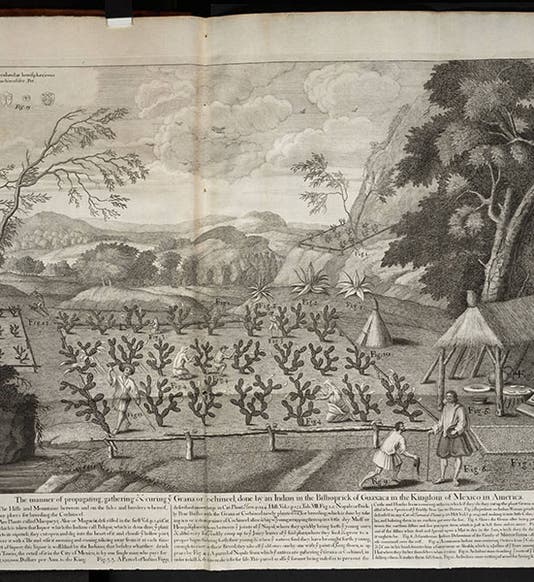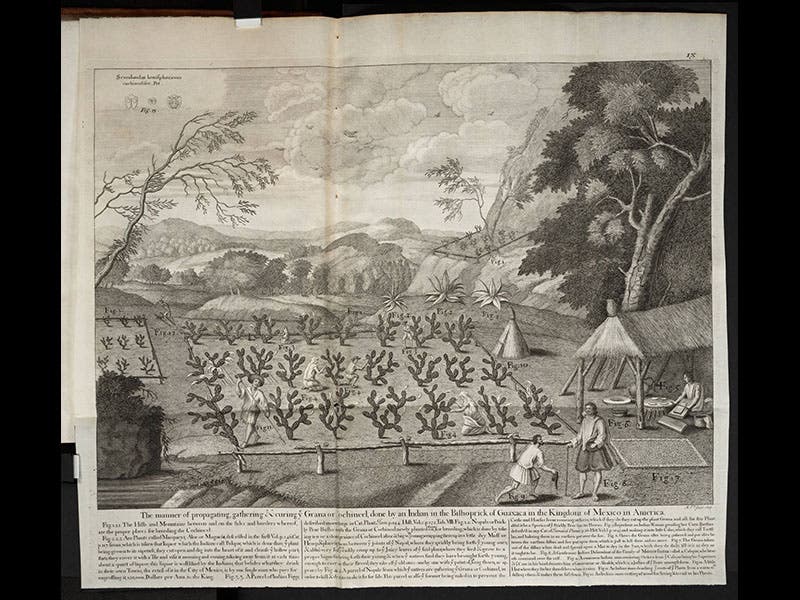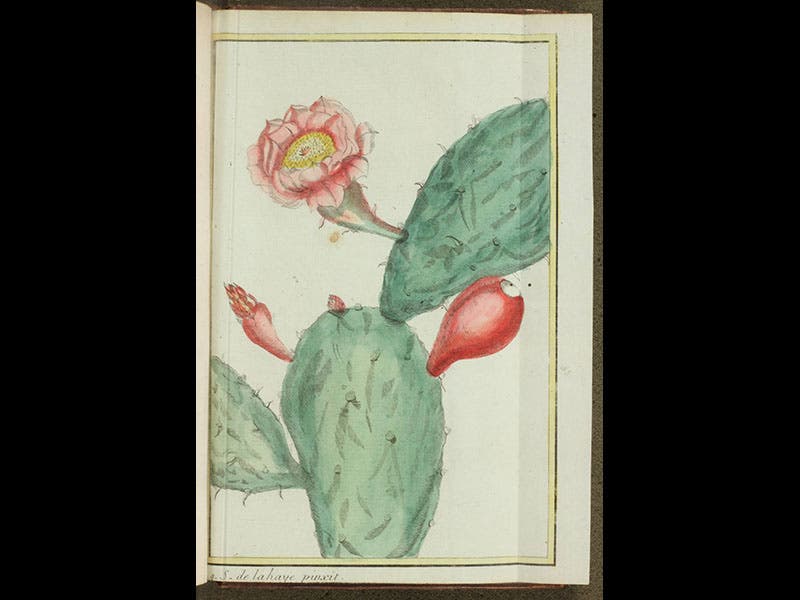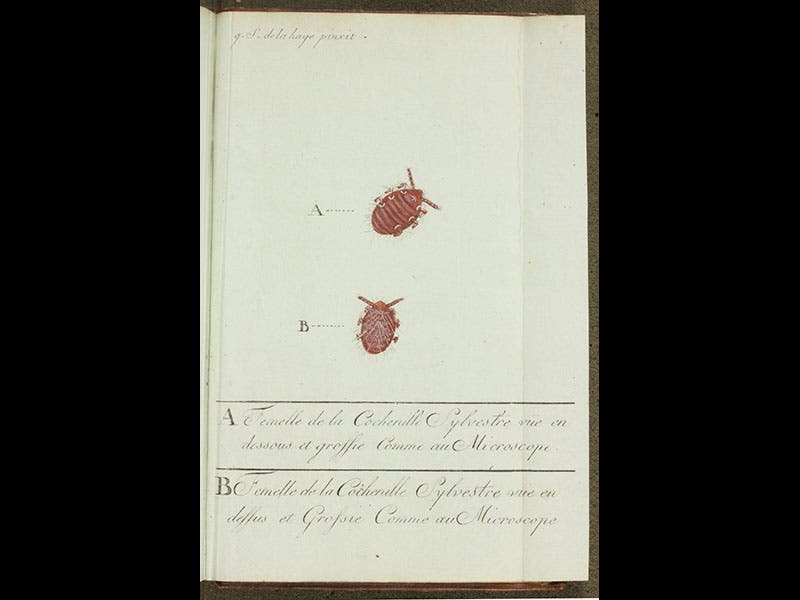Scientist of the Day - Nicolas-Joseph Thiéry de Menonville
Nicolas-Joseph Thiéry de Menonville, a French botanist, was born June 18, 1739. In 1777, Thiéry managed to pull off a botanical caper that would have made him famous, had he lived a little bit longer. For two hundred and fifty years, Europeans had been aware that one of the finest of red dyes, cochineal, had its source in Oaxaca, Mexico. For the first century or so, no one even knew what the dye came from, but gradually it emerged that the source of the dye was a small scale insect that fed exclusively on a species of Opuntia, the prickly-pear cactus, or nopal, that grows in Oaxaca. Hans Sloane included a striking engraving of a cochineal plantation in his Voyage to the Islands [!of!] (1707-25; see first image above). Spain was fiercely protective of cochineal, since it was extremely profitable, and they made sure that no foreigners, especially Frenchmen, got anywhere near Oaxaca. So Thiéry, with the blessings of his government, disguised himself as a Catalan, took an indirect path through Cuba to Veracruz, and was able to evade authorities and make his way to Oaxaca, where he obtained some prickly pears infested with the tiny scale insects. Somehow, he managed to smuggle these out of Mexico to the French island of Saint-Dominique (now Haiti), where he set up a prickly-pear/cochineal farm in Port-au-Prince. The transplant was initially a success, and French cloth-makers were excited at the prospect of a cheap red dye, but alas, Thiéry died in 1780, his bugs were neglected and followed his lead, and the entire project went for naught. Fortunately, his diary and notes survived, and they were printed seven years after his death, as Traité de la culture du nopal, et de l'éducation de la cochenille dans les colonies-francaises de l'Amérique; précédé d'un Voyage a Guaxaca (1787; second image). We recently acquired this book for our History of Science Collection, and both volumes have already been imaged and are available in our Digital Collections. The book includes four hand-colored plates; one shows a species of prickly pear (second image), and another depicts two cochineal insects (third image). Bruce Bradley recently wrote an article about the Thiéry story for the Spring 2014 issue of the Linda Hall Library Hedgehog. (scroll down to p. 7). Dr. William B. Ashworth, Jr., Consultant for the History of Science, Linda Hall Library and Associate Professor, Department of History, University of Missouri-Kansas City. Comments or corrections are welcome; please direct to ashworthw@umkc.edu.






![“Aurora Borealis,” hand-colored wood engraving by Josiah Wood Whymper, [Natural Phenomena], plate 2, 1846 (Linda Hall Library)](https://assets-us-01.kc-usercontent.com:443/9dd25524-761a-000d-d79f-86a5086d4774/0245ffcb-b70c-477c-8792-0a73ebd54eb2/Whymper%2011.jpg?w=210&h=210&auto=format&fit=crop)



